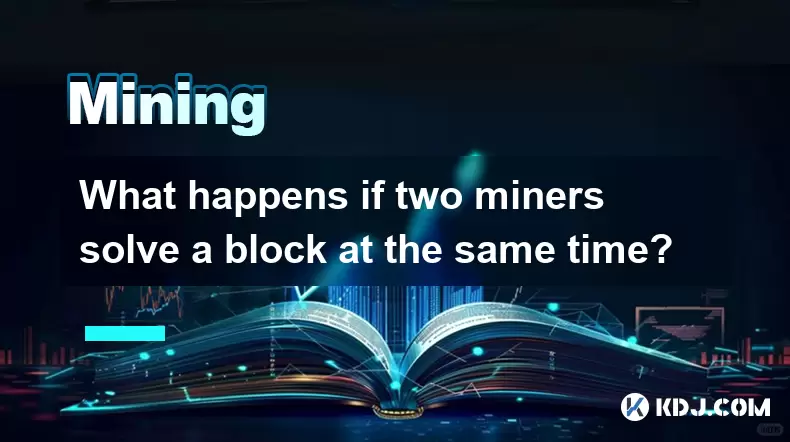-
 Bitcoin
Bitcoin $118,209.3536
1.16% -
 Ethereum
Ethereum $3,151.7546
5.98% -
 XRP
XRP $2.9277
2.35% -
 Tether USDt
Tether USDt $1.0000
0.00% -
 BNB
BNB $689.7099
1.26% -
 Solana
Solana $163.4270
1.91% -
 USDC
USDC $1.0000
0.02% -
 Dogecoin
Dogecoin $0.1983
3.74% -
 TRON
TRON $0.3008
0.51% -
 Cardano
Cardano $0.7435
2.86% -
 Hyperliquid
Hyperliquid $47.6547
-0.48% -
 Stellar
Stellar $0.4625
2.79% -
 Sui
Sui $3.9921
2.71% -
 Chainlink
Chainlink $16.0608
4.23% -
 Hedera
Hedera $0.2348
1.56% -
 Bitcoin Cash
Bitcoin Cash $496.6985
1.25% -
 Avalanche
Avalanche $21.9038
5.41% -
 UNUS SED LEO
UNUS SED LEO $8.8356
-1.88% -
 Shiba Inu
Shiba Inu $0.0...01364
5.31% -
 Toncoin
Toncoin $3.1102
4.35% -
 Litecoin
Litecoin $95.9756
3.59% -
 Polkadot
Polkadot $4.0925
5.78% -
 Monero
Monero $333.7622
-1.44% -
 Uniswap
Uniswap $9.1968
2.25% -
 Bitget Token
Bitget Token $4.6378
6.23% -
 Pepe
Pepe $0.0...01282
6.77% -
 Dai
Dai $1.0002
0.03% -
 Ethena USDe
Ethena USDe $1.0005
0.00% -
 Aave
Aave $329.9143
4.49% -
 Bittensor
Bittensor $441.4995
6.89%
What happens if two miners solve a block at the same time?
Simultaneous block solutions can cause temporary blockchain forks, which are resolved by the longest chain rule.
Jul 13, 2025 at 12:57 am

Understanding the Concept of Simultaneous Block Solutions
In the world of blockchain and cryptocurrency, mining is a crucial process that ensures the addition of new blocks to the blockchain. Miners compete to solve complex cryptographic puzzles using computational power. When a miner successfully solves a puzzle, they broadcast the solution across the network for validation by other nodes. However, what happens when two miners arrive at valid solutions simultaneously?
This situation, known as a blockchain fork, can occur due to network latency or sheer coincidence in hash rate distribution. When two miners solve the same block at nearly the same time, both versions of the block are temporarily accepted by different parts of the network.
The Mechanics Behind Blockchain Forks
When two miners produce valid blocks almost simultaneously:
- Each miner broadcasts their block to the network.
- Depending on geographic location and network propagation speed, different nodes receive these blocks in varying order.
- As a result, some nodes consider one block as valid while others accept the alternate version.
This leads to a temporary split in the blockchain, creating two competing chains. The network resolves this through the longest chain rule, which states that the valid blockchain is the one with the most accumulated proof-of-work.
Each node continues mining on the chain it considers longest. Eventually, one chain gains more confirmations than the other, making it the accepted version. The alternative chain becomes orphaned, and transactions from the rejected block are returned to the mempool for inclusion in future blocks.
What Happens to Transactions in Orphaned Blocks?
If a block is orphaned due to a simultaneous solution:
- All transactions within it are not permanently lost.
- They re-enter the mempool, the pool of unconfirmed transactions.
- Miners pick up these transactions again and include them in subsequent blocks.
It's important to note that the miner reward (block subsidy and transaction fees) from an orphaned block is also forfeited. Only the miner who contributes to the eventual longest chain receives compensation.
This mechanism prevents double-spending and maintains the integrity of the system even during brief forks.
Impact on Network Security and Confirmation Times
Simultaneous block solutions do not compromise the security of the blockchain but can affect confirmation times. Here’s how:
- Transaction finality may take longer than expected because multiple confirmations are needed to ensure a transaction is on the main chain.
- Double-spending risks increase slightly during forks, though they remain negligible if users wait for several confirmations.
To mitigate these concerns, most exchanges and services require at least six confirmations before considering a transaction irreversible.
Additionally, network participants rely on consensus algorithms like Nakamoto Consensus to maintain agreement across decentralized nodes without central oversight.
Miner Behavior During Block Conflicts
Miners play a pivotal role in resolving block conflicts. Upon receiving two competing blocks:
- A miner typically chooses to build upon the block they received first.
- Some miners might switch allegiance if another chain becomes longer.
- Mining pools often coordinate internally to optimize efficiency and reduce orphan rates.
The choice of which chain to extend depends largely on network topology and latency rather than any strategic advantage. This behavior reinforces the decentralized nature of blockchain systems.
Frequently Asked Questions
- Can two miners ever share the block reward if they solve the same block?
No, only the miner whose block ends up on the longest chain receives the full reward. The other miner receives nothing. - How often do simultaneous block solutions happen?
This varies depending on network congestion and block time. In Bitcoin, it occurs roughly every few days, while faster blockchains may experience it more frequently. - Is there a way to prevent simultaneous block solutions?
Not entirely. It's a natural consequence of decentralization and network latency. However, improvements like better block propagation protocols can reduce their occurrence. - Do all cryptocurrencies handle simultaneous blocks the same way?
Most proof-of-work blockchains follow similar rules. However, proof-of-stake systems have different mechanisms for handling forks and validating blocks.
Disclaimer:info@kdj.com
The information provided is not trading advice. kdj.com does not assume any responsibility for any investments made based on the information provided in this article. Cryptocurrencies are highly volatile and it is highly recommended that you invest with caution after thorough research!
If you believe that the content used on this website infringes your copyright, please contact us immediately (info@kdj.com) and we will delete it promptly.
- XRP Price: Higher Lows Hint at Potential Trend Shift?
- 2025-07-16 15:10:12
- Bitcoin, Crypto Casinos, and Bonuses: A New Yorker's Guide to Hitting the Jackpot
- 2025-07-16 15:15:12
- Bitcoin, Deutsche Bank, and Mainstream Adoption: A New Era?
- 2025-07-16 14:30:13
- Bitcoin's ETF Demand & Institutional Momentum: A NYC Perspective
- 2025-07-16 14:50:12
- Bitcoin's Bullish Run: Demand Surges, Correction Unlikely?
- 2025-07-16 12:30:12
- JPMorgan, Blockchain, and Stablecoins: A Wall Street Revolution?
- 2025-07-16 14:50:12
Related knowledge

How are crypto mining profits taxed?
Jul 14,2025 at 12:28am
Understanding Cryptocurrency Mining and TaxationCryptocurrency mining involves validating transactions on a blockchain network and earning rewards in ...

How to keep a mining rig cool
Jul 12,2025 at 01:42pm
Understanding the Importance of Cooling in Mining RigsCryptocurrency mining is an intensive process that places heavy demand on hardware components, p...

How to mine crypto on a gaming PC
Jul 16,2025 at 12:00pm
What is Crypto Mining on a Gaming PC?Crypto mining involves using your computer's processing power to validate transactions on a blockchain network. A...

How to set up a crypto miner
Jul 16,2025 at 09:14am
Understanding Ethereum Gas Fees: What Are They and How Do They Work?Ethereum gas fees are a fundamental aspect of the network, representing the cost r...

Can you mine crypto on a laptop?
Jul 16,2025 at 02:21am
Is It Feasible to Mine Cryptocurrency on a Laptop?Mining cryptocurrency on a laptop is technically possible, but feasibility depends heavily on the ha...

Is crypto mining worth it?
Jul 16,2025 at 01:21am
Understanding the Basics of Crypto MiningCrypto mining refers to the process of validating transactions on a blockchain network by solving complex mat...

How are crypto mining profits taxed?
Jul 14,2025 at 12:28am
Understanding Cryptocurrency Mining and TaxationCryptocurrency mining involves validating transactions on a blockchain network and earning rewards in ...

How to keep a mining rig cool
Jul 12,2025 at 01:42pm
Understanding the Importance of Cooling in Mining RigsCryptocurrency mining is an intensive process that places heavy demand on hardware components, p...

How to mine crypto on a gaming PC
Jul 16,2025 at 12:00pm
What is Crypto Mining on a Gaming PC?Crypto mining involves using your computer's processing power to validate transactions on a blockchain network. A...

How to set up a crypto miner
Jul 16,2025 at 09:14am
Understanding Ethereum Gas Fees: What Are They and How Do They Work?Ethereum gas fees are a fundamental aspect of the network, representing the cost r...

Can you mine crypto on a laptop?
Jul 16,2025 at 02:21am
Is It Feasible to Mine Cryptocurrency on a Laptop?Mining cryptocurrency on a laptop is technically possible, but feasibility depends heavily on the ha...

Is crypto mining worth it?
Jul 16,2025 at 01:21am
Understanding the Basics of Crypto MiningCrypto mining refers to the process of validating transactions on a blockchain network by solving complex mat...
See all articles

























































































